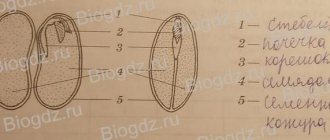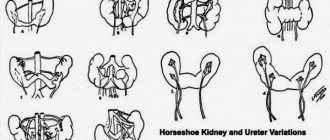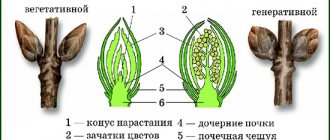Anomalies in the location and shape of the kidneys
Kidney dystopia
- this is a congenital abnormal position. The cause of this defect is a violation of embryonic migration and rotation of the kidney from the pelvis to the lumbar region. The process of 90° rotation begins to occur after the kidney has risen above the aortic bifurcation, so cessation of migration in the early stages is always combined with incomplete rotation. The lower the kidney is located, the more disrupted the process of its rotation is. In this case, the renal sinus and pelvis are facing forward or laterally. The kidney rotation process may not be complete even when the kidney is in place. Depending on the level at which the upward migration of the kidney has stopped, pelvic, iliac and lumbar dystopia are distinguished. Thoracic dystopia is a special case; it occurs when the kidney migrates excessively into the chest cavity against the background of a congenital diaphragmatic hernia, on the left 2 times more often than on the right. Kidney dystopia can be unilateral or bilateral. Dystopia of the kidney without displacement to the opposite side is called homolateral. Much less frequently, during migration to the lumbar region, the kidney moves to the opposite side, and then cross (heterolateral) dystopia develops.
The clinical significance of homolateral renal dystopia is determined by its type. Pelvic dystopia is of greatest clinical importance. This circumstance is due to the pressure of the kidney on neighboring organs (iliac vessels, pelvic sympathetic plexus, rectum, bladder, uterus), and therefore clinical manifestations can occur even in the absence of a pathological process in the abnormal kidney. In addition, a dystopic kidney is often mistaken for a space-occupying lesion, and surgical intervention has its own characteristics and difficulties. There are known observations of pelvic dystopia of a single kidney and even tragic cases of removal of such a kidney, mistaken for a tumor. Clinically, iliac and lumbar dystopias are not so significant. Thoracic dystopia is of much greater importance, since an abnormal kidney is often mistaken for an abscess, tumor, or encysted pleurisy. Modern diagnostic methods (ultrasound with Dopplerography, isotope renography, MSCT, MRI) make it possible to clearly determine the type of dystopia, assess the state of blood circulation, urodynamics, relationships with neighboring organs, and choose the most optimal type of treatment.
Cross (heterolateral) dystopia
characterized by displacement of one or both kidneys to the opposite side, so it can be unilateral or bilateral. Crossed (heterolateral) dystopia occurs after the kidney has moved upward above the aortic bifurcation. With this type of anomaly, the kidney is an anatomically and functionally independent organ that has completely completed its development, since each duct of the metanephros is embedded in its own metanephrogenic blastema. Very often, cross (heterolateral) and asymmetric dystopia (L-shaped, S-shaped) are mistakenly combined into one group. The difference is that with asymmetric dystopia, both ducts of the metanephros are embedded in one metanephrogenic blastema, often leading to a common cortex and fibrous capsule. Dystopia with fused kidneys is always secondary, since these kidneys are not able to move upward during development.
Kidney fusion -
This is an anomaly characterized by the union of two opposite kidneys into one organ. This occurs due to the fusion of two metanephrogenic blastemas at the very early stage of embryonic development - before the migration of the kidneys from the caudal parts of the embryo begins. As a result, the processes of migration of the kidney to the lumbar region and its rotation are disrupted. Therefore, fused buds are always dystopic. The ingrowth of the metanephros ducts occurs without disturbances, therefore the histological structure of the kidneys is not disturbed, and the ureters always flow into the bladder in a typical place.
Fusion can be unilateral - I-shaped kidney and bilateral - horseshoe-shaped, biscuit-shaped or lump-shaped, L-shaped kidney. The S-shaped kidney, in our opinion, also refers to unilateral fusion of the kidneys.
Bilateral fusion of the kidneys can be symmetrical (each of the kidneys is located homolaterally) or asymmetrical (one of the kidneys is located heterolaterally).
With symmetrical fusion, the kidneys can be connected by their lower poles, rarely by their upper ones, forming a so-called horseshoe kidney, or by the entire surface of the kidney, creating a biscuit-shaped or lumpy kidney.
Horseshoe kidney
in 90% of cases it is fused by the lower segments, and in 10% by the upper segments. A horseshoe kidney always has an abnormal blood supply. The structure of the renal calyces is unusual: the upper group is more developed, the lower group is underdeveloped.
Diseases in a horseshoe kidney occur much more often than in a normal kidney - from 75 to 80% of cases. The most common occurrence is hydronephrosis - 41.7%, urolithiasis - 23.6%, pyelonephritis - 19.4%, arterial hypertension 15.2%. When hydronephrosis is detected, plastic surgery is combined with resection of the isthmus. When identifying kidney stones, all modern treatment methods are used, including extracorporeal and contact lithotripsy, as well as open surgical procedures. However, the share of the latter in the structure of surgical treatment is decreasing from year to year due to the advent of minimally invasive techniques. Treatment of pyelonephritis is aimed at restoring urodynamics and prescribing pathogenetic therapy.
Biscuit-shaped or lumpy bud
has a common cortex and fibrous capsule; an extremely rare malformation occurs 1 time in 26,000 autopsies. Located at the level of L3-4, homolateral or heterolateral. The pelvis is always located anteriorly.
In clinical practice, a lumpy kidney may be mistaken for a retroperitoneal tumor and removed.
Asymmetrical fusion
characterized by the location of one of the kidneys heterolaterally. This happens for two reasons: fusion of metanephrogenic blastemas with displacement of one to the opposite side or ingrowth of the metanephros ducts into one metanephrogenic blastema and reduction of the homolateral blastema.
An L-shaped kidney occurs when the lower pole of one kidney and the upper pole of another are fused, as well as the transverse location of one of them. An S-shaped kidney is formed when the lower pole of one is connected to the upper pole of the other and their position is vertical. With an S-shaped kidney, the calyces of one half of the kidney face laterally, the other - medially. If embryonic rotation is complete and the calyces of both kidneys are directed in the same direction, such a kidney is called I-shaped. Thus, I- and S-shaped kidneys can be attributed to unilateral renal fusion.
Types of shoot branching
The shoots can branch quite strongly or form lateral shoots from axillary buds. This situation occurs if the mother shoot produces lateral shoots, and they, in turn, also produce lateral shoots. Thus, the plant organism captures as much environmental space as possible for air nutrition. The branching of shoots for trees creates a colossal leaf area.
Do you need to select scientific articles for your academic work? Specify a topic and receive a response in 15 minutes get help
Definition 3
Tillering of a shoot is branching in which large shoots grow from lower buds located near the surface of the Earth or even under it. The result of tillering is the formation of a bush.
Branching of shoots can also be divided into several types. In lower plants, bifurcation of growth points occurs. Such branching is also characteristic of horsetails and lichens. It is called dichotomous and has a very “primitive” character.
When more developed shoots appeared, monopodial branching arose. It is characterized by the fact that one apical bud occupies a dominant position and the shoots are ordered under it. If the apical bud of such plants is damaged, the tree may lose its appearance.
The latest in time of occurrence is the sympodial type of branching. A feature of this type of branching is the fact that any nearby bud can develop into a shoot and replace the previous one. This is typical for linden, apple, poplar and lilac.
A type of sympodial branching is false dichotomous, which is characteristic of shoots with opposite leaves and buds, so instead of the previous shoot, two grow at once (lilac, maple, chebushnik). This type of branching has a high degree of adaptive significance.
Basic leaf shapes
The shape of the leaves themselves can be round, oval, heart-shaped or needle-shaped, while the contours of the edges may also vary. For example, in an apple tree they are jagged, in an aspen tree they are serrated, and in a lilac tree they are entire. The division of the plates makes it possible to systematize the lateral vegetative organs of plants as simple and complex. When describing, botany pays attention to the following points:
- A simple leaf has a single leaf blade with one petiole and always falls off completely. The presence of blades is allowed in the structure, but the spaces between them do not reach the main vein, as can be seen in the example of aspen. If the notches along the edge do not exceed ¼ of half the surface, these are whole simple leaves. Examples: apple tree, lilac, birch, poplar.
- A compound leaf has several blades sitting on one common petiole and falling off separately from each other. Sometimes each of them is attached to its own petiole and has secondary stipules, like pea leaves. Whether they are simple or complex is interesting to understand with an example. Typically, legumes contain a petiole, two or three pairs of leaves and an unpaired number of antennae (from three to five). If there are no antennae, the leaf blade ends in an unpaired leaf and is called imparipinnate. In addition, the vegetative organ of peas can be completely leafless, consisting of one petiole, which turns into a branched vein and ends with tendrils.
The palmate leaves do not have a main petiole or blade and diverge along the radius of an invisible circle, like the fingers of a hand (horse chestnut, hemp). In pinnate specimens, the plates are located evenly along the axis of the main petiole: in the case of rosehip they are imparipinnate and have a single apical leaf, while in albizia they are bipinnate, since they are dissected twice and are attached to the main petiole by secondary petioles. The rowan leaf is pinnately cut, its blade is not completely divided, and the three-leaf clover has even become the national symbol of Ireland.
Principles of leaf arrangement
During the formation and growth of the stem, the leaves are placed on it in a certain order, which allows for the best possible organization of sunlight. The buds follow each other, diverging exactly in a spiral, and at the angle of their divergence, the mathematical pattern of the Fibonacci series, limited by a circle of 360°, is revealed. For example, leaves can grow two and three per whorl, five per two whorls, eight per three, and so on.
Much more often, simpler terminology is used to describe leaf arrangement:
- Regular (spiral). The leaves follow one after another and are located at all nodes of the stem. This leaf arrangement is found in wheat, roses, pelargonium, birch and apple trees.
- Opposite. The number of leaves in a node increases to two, and they themselves can be oriented crosswise in pairs (all subsequent ones are rotated 90° to the previous ones) or arranged in two rows without turns. Fuchsia, lilac or jasmine can be used for illustration.
- Whorled. Three leaves (or more) are collected in a knot - a whorl. They are arranged crosswise or shifted by half a turn in relation to the previous one, forming a bizarre mosaic, as happens in oleander and elodea. Sometimes the whorls are located only at the top of the stem and form an opposite whorled combination.
An additional option is a rosette leaf arrangement. In this case, the stem develops short, the leaves are located close to each other, and the internodes and petioles are practically not formed and are hardly noticeable. Lush rosettes with a common center are easily recognizable from characteristic representatives - agave, dandelion and saxifrage.
Adaptation to the external environment
Changing the structure of the leaves not only performs protective functions, but also allows them to store moisture and nutrients for future use. The teeth along the edges condense water vapor and form dew drops. The production of aromatic oils, toxic substances and volatile pheromones repels herbivores and allows them to preserve the species. The main metamorphoses are presented in table form:
| № | Name | Target | An object | Result | Example |
| 1 | Leaf spines | Protection from external enemies | Leaf blades, stipules | Traumatic Spikes | Barberry, acacia |
| 2 | Trap organs | Hunting of insectivorous plants for small invertebrates | Leaves | Sticky mucous secretion, vesicles with mouth openings | Sundew, butterwort, bladderwort |
| 3 | Sac-like growths | Creation and distribution of water reserves | Leaves and roots | Additional fluid reservoirs | tropical liana |
| 4 | Bracts | Attracting pollinating insects | Axils with flowers or inflorescences | Large sizes, bright colors | Bougainvillea, sage, spurge |
| 5 | Succulent modifications | Creation of moisture reserves | Leaves and stems | Thickness and meatiness | Aloe, agave |
| 6 | Mustache | Support and fixation | Upper part of the leaf blade | Attachment to surrounding trees and shrubs | China, peas |
Biological evolution has allowed leaves to adapt well to various natural anomalies and climatic disasters. The term “lotus effect” characterizes the unique ability to prevent surface contamination and remove excess water; the rugged edges help prevent the adverse effects of winds. Hair in the form of bristles and a glossy waxy coating retain moisture and inhibit excessive evaporation. The same goals are served by minimizing the size and delegating the functions of photosynthesis to the stem.
Excretion system - leaf fall (leaf fall)
A biological adaptation of plants to protect themselves from evaporation is leaf fall - the massive fall of leaves during the cold or hot season. In temperate zones, trees shed their leaves during the winter, when the roots cannot draw water from the frozen soil and frost dries out the plant. In the tropics, leaf fall occurs during the dry season.
Leaf fall
Preparation for shedding leaves begins when the intensity of life processes weakens in late summer - early autumn. First of all, chlorophyll is destroyed; other pigments (carotene and xanthophyll) last longer and give the leaves an autumn color. Then, at the base of the leaf petiole, parenchyma cells begin to divide and form a separating layer. After this, the leaf is torn off, and a mark remains on the stem - a leaf scar. By the time the leaves fall, the leaves become old, unnecessary metabolic products accumulate in them, which are removed from the plant along with the fallen leaves.
All plants (usually trees and shrubs, less often herbs) are divided into deciduous and evergreen. In deciduous plants, leaves develop during one growing season. Every year, with the onset of unfavorable conditions, they fall off. The leaves of evergreen plants live from 1 to 15 years. The dying off of some old leaves and the appearance of new leaves occurs constantly, the tree appears to be evergreen (conifers, citrus fruits).
Please rate the article. We tried our best:)
Types of sheet arrangement
There are three main types of leaf arrangement:
- Regular or spiral;
- opposite;
- whorled.
In the next arrangement, single leaves are attached to the stem nodes in a spiral (apple tree, ficus). In opposite case, two leaves in a node are located one opposite the other (lilac, maple). Whorled leaf arrangement - three or more leaves at a node envelop the stem in a ring (elodea, oleander).
Any leaf arrangement allows plants to capture the maximum amount of light, since the leaves form a leaf mosaic and do not shade each other.
Types of leaf arrangement









